Genshin Moon Goddesses and New Moon: "Song of the Welkin Moon"
Breaking news arrived so suddenly it caught everyone off guard. First, some overarching theories: According to information currently revealed in "Song of the Welkin Moon", Teyvat's three moons are Eternal Moon, Iridescent Moon, and Frost Moon. Now follow my lead as we examine current research and discussions regarding the new "Song of the Welkin Moon" event.

(The trinity of moon goddesses,who once steered the primordial celestial sphere and wove love and passion into the very heart of the world, have long since faded into the shadows of time.Yet, those who follow the tides still sing and pray, for a new moon is set to rise...)
The three moons are fundamentally technological constructs of the ancient dragon civilization, originally conceived as orbital weapon platforms built by the Dragonkin upon Teyvat's three natural satellites. Following the decline of the ancient dragons, the trinity of moon goddesses were commandeered by Phanes, the world's new sovereign.
Beyond physical celestial bodies, the worshipped "Trinity of Moon Goddesses" appear to have physically existed. Current research remains uncertain whether they represent mythologized versions of super (draconic) AI systems once installed on the three moons, or divine titles bestowed upon deities assigned management duties after Phanes' seizure of the lunar constructs.

During the world-upending catastrophe that followed, the three moons were shattered. As the Ancient Moons lost their positions, the world was no longer sheltered by "eternity", inevitably marching toward its end. It wasn't until a new moon rose, causing the depleted fate to flow again, that this lunar entity-known as the "Welkin Moon"-emerged, corresponding to the lunar deity featured in the game's monthly Blessing of the Welkin Moon.
The 9:10 release time of "Song of the Welkin Moon" holds cryptic significance. September 10th this year coincides precisely with the Version 6.0 update date. Combined with currently known information, this event likely serves as foundational foreshadowing for our next destination--Nod-Krai.
Following this, we'll discuss Teyvat's lunar entities and future teasers in order of information abundance.
1. Iridescent Moon of The trinity of moon goddesses

The phrase "When the 'Iridescent Moon' shattered, the crimson shadow sank into the abyssal sea" confirms that the "Iridescent Moon" is what we now call the "Crimson Moon"-the object of worship for Khaenri'ah's first dynasty, the Crimson Moon Dynasty, and the source of the ancient power known as "Flameblood of the Eclipse Moon" inherited in the bloodline of "Crimson Moon Orphan" Arlecchino. During an ancient, undocumented cataclysm, remnants of the Iridescent Moon sank underground, becoming the crimson moon that once illuminated the subterranean kingdom.

Both the book Perinheri (also known as Hleobranto Innamorato) and the lore of the "The Knave" weapon "Crimson Moon's Semblance" depict stories of Khaenri'ah's Crimson Moon Dynasty-the era preceding its last dynasty, the Eclipse Dynasty. During that time, the subterranean realm was still illuminated by a crimson moon. However, as the Eclipse ascended, the Crimson Moon-worshipping dynasty declined, and its royal lineage was branded heretics and eradicated.
Legends say that in ancient times, a noble clan ruled over the subterranean kingdom of Khaenri'ah. This clan revered the Crimson Moon that once illuminated the underground realm, with their monarch even taking the title "Crimson Moon." The kingdom constructed countless sky-piercing towers for worship, believing this lunar entity would bring transcendent hope and salvation to humanity. Yet the Crimson Moon had long perished-what they venerated was merely a celestial corpse suspended in the heavens.

As time passed, the people's hopes turned to disillusionment and then to violent fury. They accused their rulers of weaving lies to blind them, offering nothing but false promises. Meanwhile, the Eclipse-its origins unknown-had quietly risen. This new faith spread like wildfire across the kingdom. In the ensuing uprising, the moonlit palaces were reduced to ashes, and the Crimson Moon royal lineage was utterly extinguished.
The once-revealed Crimson Moon was now reviled as the "Eclipsed Moon". None dared claim allegiance to the lunar corpse's legacy. Under new rulers, Khaenri'ah entered a new era-the Eclipse Dynasty.

Yet not all of the old royalty perished. A few hid in shadows untouched by the Eclipse's light, surviving the purge. They swore oaths in the Crimson Moon's name to one day exact vengeance upon the Eclipse-only to have fate mock them all. The Eclipse ultimately fell to its own folly and hubris, and Khaenri'ah itself ceased to be. The blood-soaked vendettas of the past had ultimately lost all meaning.

2. Frost Moon of The trinity of moon goddesses

Information regarding the "Frost Moon" was first mentioned in Version 5.3's second-phase event "On the Trail of Behemoths". According to Helka, a client from Nod-Krai, this region contains numerous ancient dragon ruins. Where these ruins cluster, there exists a reclusive sect called the "Frost Moon Scions" who devoutly worship a "Lunar Deity" and wield an "esoteric magic". Peculiar statues crafted by this group can be found throughout Nod-Krai.

Explorations into Natlan's lore have shattered our preconceptions about ancient dragon civilizations. These former masters of Teyvat were not mere mythical beasts wielding elemental powers but intelligent beings who developed a technologically advanced civilization. Long before Phanes descended to seize this planet, the dragons had conquered land and sea while expanding their dominion into the cosmos. Their scientific achievements-now partially unveiled-defy modern comprehension.
Deep within Ozkatanatlan lies the foundation of "Chichen Uctokah"-an ancient draconic metropolis. The dragons entrusted its operations to Ixlel, an artificial super-intelligence from their Saint-Dragon series. She revealed to Och-Kan memories of the draconic civilization's zenith: technologies surpassing modern Earth's capabilities, including space elevators, orbital weapons, and psychic research.
The "The trinity of moon goddesses" was likewise an ancient dragon technological construct-likely a planetary defense array built by retrofitting natural satellites. After its destruction, remnants drifted in low orbit with some fragments crashing onto Teyvat's surface. The celestial debris glimpsed during Version 5.1's Archon Quest when Natlan's sky was momentarily torn may be remnants of the Frostmoon from the trinity of moon goddesses.

The disfigured artisan who once aided the Second Pyro Archon (Crimson-Eyed Youth) serendipitously witnessed astonishing remnants of the draconic civilization's golden age within the ancient draconic city ruins beneath Ozkatanatlan.

Meteor craters along Natlan's eastern coast contain peculiar silver-white meteorites locals call "star fragments"-likely the trinity of moon goddesses fragments that fell back to Teyvat.
Whether the Frostmoon Scions' acts of worship stem from ignorant deification of ancient technology or serve as a veil for techno-archaeological exploitation of draconic secrets, their acquisition of extraordinary power remains undeniable. The "magic" Herka described likely corresponds to what Archon Mavuika revealed as "primordial power predating the Seven Elemental Forces"-in truth, remnants of ancient dragon technology.
The Tri-Moon debris now manifesting in the sky has drawn intense scrutiny from The Doctor. His Fatui forces are establishing outposts across Nod-Krai. As the Fatui's chief scientist, he likely possesses classified intel about celestial and draconic technologies, and this rare opportunity to seize such ancient power won't be missed. The impending investigation into dragon relics will inevitably encroach upon Frost Moon territory-whether this leads to collaboration or conflict remains uncertain. How the Traveler interacts with the Frost Moon Scions will be pivotal to Nod-Krai's storyline.
The Song of the Welkin Moon states: "When the 'Frost Moon' ceased to turn, nations faltered and fell into ruin." This suggests that ancient human civilizations (presumably during the Unified Civilization Era) drew power from the Frost Moon universally. When the moon was destroyed, societies dependent on this energy collapsed into chaos, mirroring the Frostmoon Scions' current plight.
3. Eternal Moon of The trinity of moon goddesses

The "Eternal Moon" remains the least documented among the Three Moons. Yet as hinted in the Song of the Welkin Moon-"When the 'Eternal Moon' fell, the heavens and earth were thrown into chaos."-it was likely the dominant lunar entity with the greatest civilizational influence and most catastrophic consequences after its destruction. The phrase "a world no longer sheltered by 'Eternity' marches toward its end" directly references this "Eternal Moon.
Details about the Three Moons' cataclysmic fall remain scarce. Though foreshadowed early in the game, only fragmented clues and folkloric accounts exist. For instance, "Moonlit Bamboo Forest" records this myth: "After a world-overturning disaster, the trinity of moon goddesses turned against each other, ending in mutual annihilation. Only one left behind a pale corpse, casting cold light across the heavens."
The Records of Jueyun · Mountain Spirits state: "At a far-flung moment in the distant past, the ancestor of the seelie met a traveler from afar, with whom they swore an oath of union witnessed by the three sisters of the Lunar Palace. Just thirty days later, a sudden disaster struck. The seelie and their lover fled into exile as the world collapsed around them, fleeing until the terrible calamity caught up and seized them. Their cruel punishment was to be separated for eternity, their memories erased without trace." This implies potential connections between the Three Moons' fall and the Third Descendant-whose remains later became material for crafting Gnoses.

4. Welkin Moon in Genshin Impact

The Welkin Moon stands as both the most familiar yet enigmatic lunar entity. Its familiarity stems from the Lady of the Welkin Moon-an image all players recognize from daily viewing via the Monthly Pass purchase interface. Yet its mystery persists: despite appearing since the game's launch, no lore beyond this monthly card art exists.
The current Song of the Welkin Moon offers but one revelatory line: "The world, no longer sheltered by 'Eternity,' marches toward its final breath. Yet, from the ashes, the 'New Moon' rises, its ascent spinning the wheel of fate anew." This confirms two critical points:
- The Welkin Moon emerged as a new lunar body after the Three Moons' fall-not a remnant of the original triad.
- It holds pivotal significance in Teyvat's destiny, directly tied to the world's ultimate fate.
The reason for concluding that the "New Moon" mentioned in the event lore refers specifically to the Welkin Moon is twofold. Firstly, the figure appearing in the interface closely resembles the Lady of the Welkin Moon, and the event itself is titled Song of the Welkin Moon. Secondly, a previous official event distributed an item named "Blessing of the Welkin Moon: New Moon" with this description: "A ritual performed when the new moon rises to pray to the celestial moon for wealth and good fortune. You may consider this Teyvat's first new moon-or at least the first one you've witnessed."

This moment truly highlights Simulanka's growing narrative significance in Version 4.8. Remember the "Mending the Beacon" quest in Sea of Fragments? When the lighthouse guiding world-wandering adventurers home collapsed, the restored beacon-with the Traveler's aid-ascended to the heavens under Fate's Goddess' blessing, transforming into a lunar body. Now, lost adventurers can finally return home, rest, and embark on new journeys beyond.

The quest's dialogue holds profound implications. When hearing about the adventurers' journeys, Paimon exclaims "It sounds like they're exploring beyond this world!" while the Traveler furrows their brow in contemplation, asking "What's the cost of such voyages?"
After restoring the lighthouse to guide the voyagers home, conversations between villagers and returning adventurers poignantly explore the existential reflections of "those who venture beyond" versus "those who remain in Teyvat". The quest culminates in a pivotal choice: "Which is better-the world beyond, or the world within?" For lore-savvy players aware of Teyvat's true nature, this narrative is layered with metaphorical depth.

So, could it be that the Welkin Moon-which influences the fate of a world marching toward its end-corresponds to that lighthouse beacon guiding villagers in Simulanka?
As a mirror image of Teyvat, Simulanka's storybook realm contains metaphors that seem to reenact and prophesize Teyvat's core cosmology and ultimate destiny. This layered narrative will undoubtedly reveal new depths with future revelations.
5. The Nod-Krai's Long-Term Narrative Foreshadowing in "Song of the Welkin Moon"
The sudden release of Song of the Welkin Moon brought major surprises. Its unconventional launch time holds layered implications, given September 10th aligns with the projected Version 6.0 update date. Earlier clues suggest the Snezhnayan region of Nod-Krai will likely become our next destination after Natlan, with investigations into the trinity of moon goddesses secrets confirmed as its core narrative theme. Thus, this event serves as long-term narrative foreshadowing for Nod-Krai.
The Song of the Welkin Moon event page will continue to update. Currently, the second page still contains substantial unrevealed information. I will persist in updating here or creating new articles for further discussion as more details become available.Stay tuned for the latest Genshin Impact updates and official merchandise!











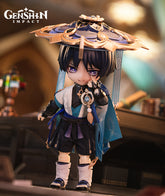
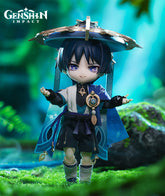






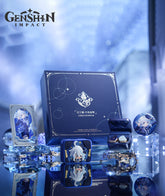
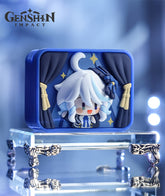
![[Official Merchandise] Genshin Impact Theme Vision Keychain Charm](http://genshinfans.com/cdn/shop/files/ZT01_4ff643a3-f4c7-4e69-949d-97312b5da85d_165x.jpg?v=1722241611)


![[Official Merchandise] Wanderer Scaramouche Cat Hanging Plush Toys](http://genshinfans.com/cdn/shop/files/zt-05_165x.jpg?v=1698818423)
![[Official Merchandise] Wanderer Scaramouche Cat Hanging Plush Toys](http://genshinfans.com/cdn/shop/files/zt-06_165x.jpg?v=1698818424)
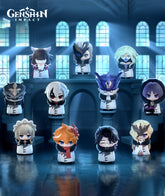



![[Official Merchandise] Genshin Impact Slime Plush Toys](http://genshinfans.com/cdn/shop/products/ZT06_165x.jpg?v=1691978287)
![[Official Merchandise] Genshin Impact Slime Plush Toys](http://genshinfans.com/cdn/shop/files/ZT02_6137d7a6-4ee1-4a82-9495-4a12b1032ea2_165x.jpg?v=1691977956)








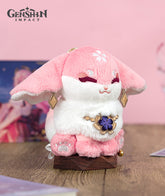
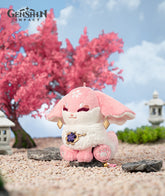


![[Official Merchandise] Arlecchino Impression Afternoon Tea Cup and Saucer Set](http://genshinfans.com/cdn/shop/files/Arlecchino-Impression-Afternoon-Tea-Cup_165x.jpg?v=1714383254)
![[Official Merchandise] Arlecchino Impression Afternoon Tea Cup and Saucer Set](http://genshinfans.com/cdn/shop/files/Arlecchino-Impression-Afternoon-Tea-Cup2_165x.jpg?v=1714383255)
![[Official Merchandise] Kaedehara Kazuha Impression Bracelet](http://genshinfans.com/cdn/shop/files/ZT02_cacb626a-33db-414d-aab1-63e59b0a0ba8_165x.jpg?v=1698747523)
![[Official Merchandise] Kaedehara Kazuha Impression Bracelet](http://genshinfans.com/cdn/shop/files/ZT04_79fecbdd-ac05-4a1a-9488-4814e86eeee1_165x.jpg?v=1698747523)





